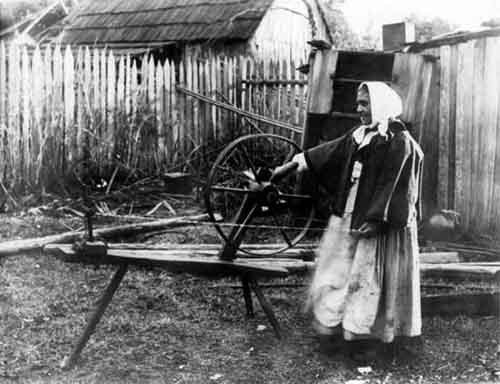Murphy Browne © October 2013
OCTOBER IS WOMEN’S HISTORY MONTH IN CANADA
SYLVIA STARK CANADIAN PIONEER WOMAN
In 2013 the theme for Women’s History Month 2013 was “Canadian Women Pioneers: Inspiring Change Through Ongoing Leadership.” Sylvia Estes Stark was a “Canadian Women Pioneer.”
During this month as we recognize Women’s History Month in Canada the official theme for the month (from Status of Women Canada) is “Canadian Women Pioneers: Inspiring change through ongoing leadership.” Sylvia Estes Stark is one of the pioneering women whose name should be included on the list of pioneering women in Canada. Estes Stark and her family were pioneers who helped to develop Vancouver Island in British Columbia.
Sylvia Estes was born in 1839 into an enslaved African family in Clay County, Missouri. Sylvia, her older brother Jackson, her younger sister Agnes and her mother Hannah were owned by Charles Leopold. Sylvia’s father Howard Estes was owned by Tom Estes and worked on his ranch as a cattle-herder. Gold was discovered in California in 1848 which started a “Gold Rush” of some 300,000 people looking to strike it rich. In 1849 Tom Estes decided to cash in on the fortunes being made in California by sending his two sons and Howard Estes to California to sell cattle because beef was in great demand. Howard Estes seized this opportunity to strike a bargain with his owner where he would work as a prospector mining for gold while in California and buy his freedom for $1,000 dollars. Tom Estes agreed to give Howard Estes his freedom papers whenever he received the $1,000 dollars.
While in California Howard Estes worked, saved and sent the $1,000 dollars back with Tom Estes’ sons. Tom Estes collected the money but reneged on the bargain he had struck with Howard Estes and refused to give him his freedom. Howard Estes who at that time was mining gold in California refused to return to slavery and instead continued to work and sent money to the “owner” of his wife and children to buy their freedom. Tom Estes took Charles Leopold to court claiming that any money Leopold received from Howard Estes as payment for his family’s freedom rightfully belonged to him (Tom Estes) since he “owned” Howard Estes. Leopold kept the money and unlike Tom Estes gave Hannah Estes and her children their freedom. The upshot of the court case was that Tom Estes was forced to grant Howard Estes his free papers. Unfortunately by the time Howard Estes returned to Missouri to claim his family his youngest daughter Agnes had transitioned from the effects of scarlet fever.
Returning to Missouri a free man in 1851 and after securing his family’s freedom the Howard Estes family left for California, a free state. In California the remaining Estes daughter Sylvia Estes married Louis Stark in 1855 and the couple had two children. The Estes family moved to California to ensure they remained free but because of vicious racial persecution they eventually moved to British Columbia in Canada. By 1858 African Americans realizing that although California was a free state they were not really free seized the opportunity to leave the shores of the USA and settle on Vancouver Island, British Columbia. In 1858 the African American community of California received a letter of invitation to immigrate from the Governor of Vancouver Island, Sir James Douglas. Maybe Douglas felt some kinship with the beleaguered African American community because he was the son (born in British Guiana) of an African woman and a Scottish man. Together with hundreds of other African Americans the Estes and Stark family immigrated to Vancouver Island.
Sylvia and her husband Louis Stark with their family settled on Salt Spring Island in 1860. They were homesteaders who worked at making a home of the log cabin in which they lived and clearing the wilderness around their home for farming. As a pioneer woman, Sylvia Stark had to contend with wild animals (bears and cougars) stealing her livestock and the backbreaking work necessary to survive as a farmer during the early settlement of British Columbia. She also served her community as a midwife. Some of her recollections were documented by her daughter including: “Sylvia Stark’s first sight of her new home on Salt Spring Island was an unfinished log cabin surrounded by trees and thick underbrush.” As a young mother of four small children (2 more born in Canada) she had to take care of their livestock when her husband became ill and was bedridden for several weeks following complications from a small pox vaccination. “There were 14 cows to milk, pigs and chickens to feed, aside from her other duties and tending to the children.” In spite of such setbacks and losing livestock to marauding wild animals: “Mrs. Stark seemed to be tireless in her efforts to make their home life enjoyable. She made hominy from the wheat and corn of their own raising. Sometimes boiled wheat had to be a substitute for bread.”
Pioneer women have been idealised as the people who helped to “make” this country and several White women have written about their experiences “roughing it in the bush” as settlers in early Canada. Sylvia Estes Stark was a Canadian pioneer woman although she did not have the luxury of time to document her thoughts and experiences; she was too busy surviving and helping her community to survive. Sylvia Stark transitioned in 1944 at age 105 and her life is recognised as an important part of British Columbia history. She should be remembered along with all the other “Canadian Women Pioneers: Inspiring change through ongoing leadership” during this Women’s History Month.
Murphy Browne © October 2013







No comments:
Post a Comment